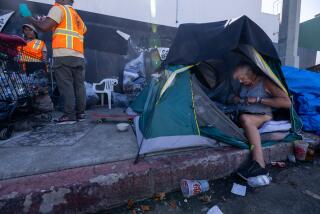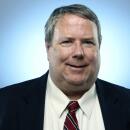L.A.’s Top Advisor Urges More Use of Green Power
- Share via
Los Angeles should more than double the amount of energy it generates from solar power, wind and other nonpolluting sources by 2017, the City Council’s top advisor recommended Thursday, but some environmentalists complained that the plan is as hazy as Southern California on a smoggy day.
Chief Legislative Analyst Ron Deaton suggested that 20% of the electricity the city Department of Water and Power sells to retail customers should be generated from renewable sources such as wind, solar, geothermal and hydroelectric power, up from what he said is 8% today.
“A diversified energy portfolio that includes renewables reduces the risk of price spikes and blackouts due to natural gas or coal-market manipulation and supply shortages,” Deaton said in his report to the City Council.
Deaton warned, however, that the cost for renewable sources by 2017 could hit $280 million, so, he said, projects should be judged on their cost-effectiveness before they’re approved.
He also wants to include large hydroelectric plants in the definition of renewable sources, and allow a balance of retrofitted gas-powered plants that are cleaner-burning. Environmentalists object to that because of the pollution caused by local gas plants and the environmental damage caused by large dams.
Bernadette Del Chiaro of the Environment California Research and Policy Center said she is relieved that a report has been released so that the council can address the issue of renewable energy.
“We are very concerned, however, that the report allows for large-scale hydro and fossil-fuel loopholes to be included in the DWP’s renewable portfolio standard plan,” Del Chiaro said. “Our initial reaction to this report is that the background information and policy recommendations provided are disappointedly vague, especially given the fact that the public has been waiting for over a year to view its contents.”
The council asked Deaton to come up with a recommendation after the Legislature passed a law requiring private utilities to increase their renewable energy sources by 1% annually and to reach 20% by 2017. The law exempted municipal utilities including the DWP.
Del Chiaro and other environmentalists disputed Deaton’s contention that the city generates 8% of its power from renewable energy sources. If large power dams are excluded from the calculations, the critics said, the city gets only 2.2% of its energy from renewable sources, while utilities statewide generate 12% of their energy from such sources.
Still, Martin Schlageter of the Coalition for Clean Air said he is encouraged that Deaton has given the council an opportunity to significantly increase the city’s portfolio of clean energy.
“It opens the door by saying it’s a good idea so let’s go do it,” Schlageter said. “It says go figure the best way to do it.”
Del Chiaro said she too hopes the council will take the report and aggressively pursue clean-energy programs, but she worries that Deaton’s report might give ammunition to those in the DWP who are resistant to change.
She also was concerned that Deaton proposed a cap on investment that could limit the DWP’s ability to meet the 20% goal.
“All in all, we are very concerned that this report leaves the door open to DWP continuing down its dirty and crooked path of over-dependence on polluting fossil fuels with minimal progress, if any, toward clean, affordable and renewable energy,” she said.
More to Read
Sign up for Essential California
The most important California stories and recommendations in your inbox every morning.
You may occasionally receive promotional content from the Los Angeles Times.











